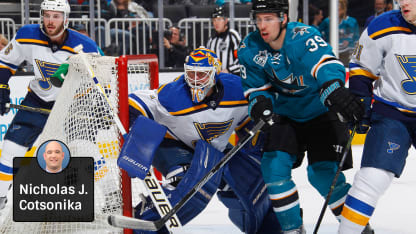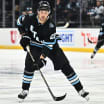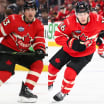First, understand what the Blues are supposed to be: A hard, heavy, grinding, structured team. They want to put the puck deep in your zone, keep it there, go to the net and wear you down. Though they have high-end talents like forward Vladimir Tarasenko, they rely on depth and teamwork far more than individual skill. Hitchcock often says they have three second lines instead of a first line, second line and third line.
"Our game is work," Blues forward Kyle Brodziak said. "I don't think it's a secret we play physical and we play hard and we try to get pucks on net and create chances in front. It's really as simple as that. Move your feet. Shoot pucks. Be hard in the right areas. That's the Hitchcock style of hockey."
Said Blues defenseman Kevin Shattenkirk, "[Hitchcock's] system is all team-based and we have to trust the structure. I think when we do that, and we have done that in this playoffs, it's worked."
The Blues style can be hard to play against, but it also can be hard to play. Two reasons: It's physically demanding and it requires five skaters to be in sync. If one part isn't working, the machine breaks down and it can look worse than it should.
Now, understand what took place in the first two games of the series and get into at least the basic tactics: The Blues were outplayed for much of Game 1 but won 2-1 largely because of goaltender Brian Elliott. They got worse in Game 2, spending too much time in their zone and too little in the San Jose zone, playing on their heels instead of their toes, letting the Sharks do to them what they wanted to do to the Sharks.



















